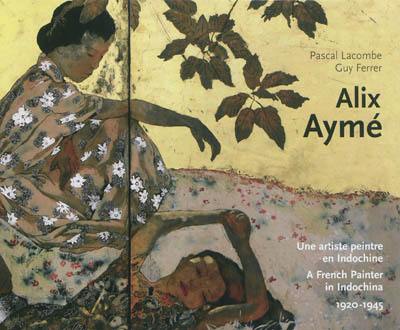
Paru le 18/02/2012 | Relié 119 pages
Tout public
Alix Aymé (1894-1989)
C'est une jeune élève de Maurice Denis qui quitte la France en 1919 pour accompagner son époux chargé d'une brève mission en Chine.
Ce premier voyage sera fondamental. Malgré une acclimatation un peu difficile, Alix Aymé se passionnera vite pour le continent asiatique et y séjournera plus de vingt ans. Avide de connaissances, d'une nature courageuse et déterminée, elle multiplie les voyages en Chine, au Cambodge, au Laos, au Vietnam, etc., dans des conditions qui, à l'époque, exigeaient d'avoir un tempérament solide. Elle se passionne pour les techniques picturales asiatiques et c'est à elle, avec Joseph Inguimberty, que l'on doit la renaissance de la laque vietnamienne qu'elle enseigne de 1934 à 1939 à l'école des beaux-arts d'Hanoï.
Influencée par Gauguin et les Nabis, elle parvient à faire une synthèse artistique avec les styles indochinois sans tomber dans le maniérisme ou l'exotisme. Sa peinture est alerte et délicate, c'est une fine coloriste, son trait est précis et élégant. C'est toute la sensibilité de l'Asie qu'Alix Aymé nous fait percevoir dans son oeuvre.
Alix Aymé (1894-1989)
A young student of Maurice Denis leaves France in 1919 to accompany her husband on his short mission to China. This first trip will be of great importance. In spite of a difficult period of adjustment, Alix Aymé will quickly develop a passion for the Asian continent and will remain there for more than twenty years. Eager to learn and of a determined and courageous nature, she makes multiple journeys to China, Cambodia, Laos, Vietnam, etc., under conditions that, at the time, required a strong character. Passionate about Asiatic pictorial techniques it is to her, together with Joseph Inguimberty, that we owe the renaissance of the Vietnamese art of lacquer that she taught, from 1934 to 1939, at the School of Fine Arts of Hanoi.
Influenced by Gauguin and the Nabis, she succeeded in creating a synthesis of Indochinese styles without falling into either mannerism or exoticism. Her painting is lively and delicate ; she is a fine colorist, her line elegant and precise. It is the entire sensibility of Asia that Alix Aymé makes us perceive in her work.